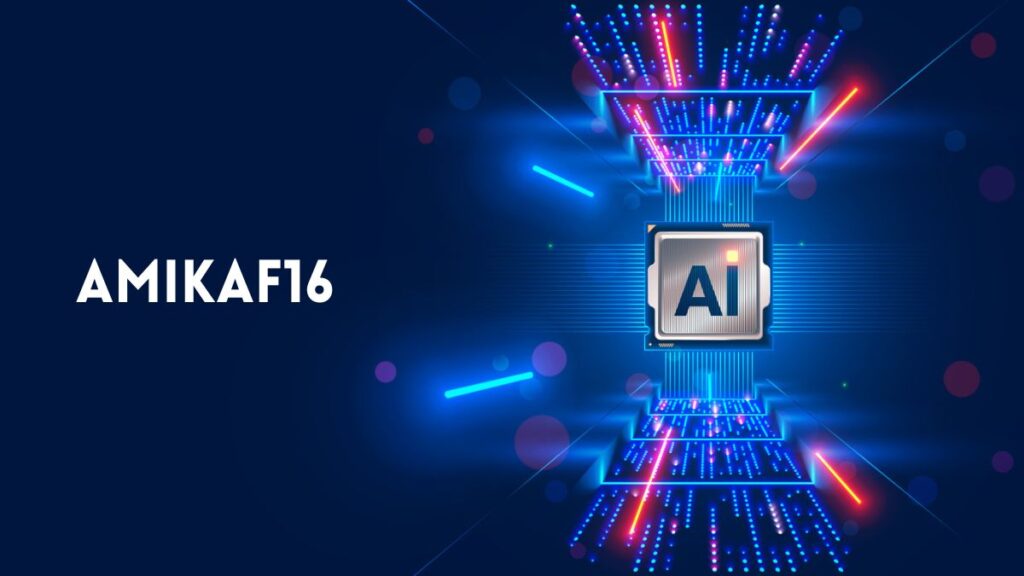In the wild west of the modern internet—where data is power and algorithms are religion—new names, codes, and keywords rise from the depths without warning. Some make headlines, others vanish before they even gain traction. But then there’s the cryptic outlier. The phantom signal. The whisper on developer forums and deep net threads: Amikaf16.
This isn’t your next Silicon Valley unicorn or some gimmicky app gone viral on TikTok. No, Amikaf16 feels different. With a name that reads like a Cold War cipher, Amikaf16 isn’t just a keyword—it’s a mystery wrapped in binary, steeped in speculation, and slowly morphing into legend.
Let’s tear into the fog, dig past surface-level searches, and see what lies beneath this obscure keyword. Because if the chatter is true, Amikaf16 isn’t just some rogue codebase—it might just be the future hidden in plain sight.
The Digital Breadcrumbs of Amikaf16
The first traceable appearance of “Amikaf16” was in a repository dump buried inside a defunct GitLab mirror—anonymous, fragmentary, but fascinating. Labeled only as “Version 0.4-alpha,” the accompanying readme file referenced distributed computing, adaptive load balancing, and a highly modular plugin framework for autonomous networks.
Most of the file comments were in a hybrid of English and Finnish, leading many to speculate that Amikaf16 originated in Northern Europe. No devs signed their names. No roadmap. Just one line of haunting clarity at the very top:
“Amikaf16 is not a product. It is a process.”
Cue the conspiracy theorists.
What Is Amikaf16 Really?
From scattered traces across darknet pages, obscure academic journals, and Git dump crawls, Amikaf16 appears to be—at its core—a modular digital infrastructure framework designed for scalability, stealth, and speed.
Sounds vague? That’s the point.
But when you stitch together code samples, packet behavior, and forum discussions, you begin to form a hypothesis. At least three core concepts seem to define the project:
-
Modular Autonomy
The architecture suggests that Amikaf16 allows for microservices to spawn, communicate, and decommission independently. Like a digital beehive, each node carries minimal weight, but the collective forms a robust, self-healing system. -
Anonymized Adaptive Load
Rumors on dark web forums describe a system that “rebalances” its data handling across networks in real-time without exposing IPs or identifiable traffic. This isn’t just about speed—it’s about cloaking presence. -
Plugin Superversatility
The few confirmed modules appear designed to hook into anything—from legacy finance systems to edge AI platforms. It’s interoperability on steroids, hinting at a use case that spans surveillance, research, or even decentralized computation.
And here’s the kicker: multiple cybersec experts have reported seeing Amikaf16-like fingerprints in smart city grids, weather prediction networks, and even blockchain validators.
Coincidence? Maybe. But where there’s digital smoke, there’s often a crypto-powered fire.
The Cult of Silence
Amikaf16 doesn’t have a LinkedIn page. No logo. No Medium articles or YouTube explainers. It’s not trying to go viral. In fact, it seems to want the opposite.
The term “Amikaf16” is oddly absent from major search indexes unless you’re using region-specific engines or crawling archived pages. Google Trends shows flatlines. Reddit threads mentioning it are mysteriously deleted or locked.
That sort of silence isn’t just rare. It’s intentional.
Some speculate that Amikaf16 is part of a government or military skunkworks project—a protocol designed to test decentralized intelligence. Others lean toward the idea of an AI-born framework, an evolutionary child of GAN networks let loose to design its own infrastructure.
But the prevailing theory among seasoned coders and netizens is this: Amikaf16 is a framework for building ghost systems—networks that exist, operate, evolve, and vanish without leaving a traditional digital fingerprint.
Follow the Functionality
If the keyword Amikaf16 is a cipher for functionality, let’s decode its potential through plausible use cases:
1. Ghost Networks for NGOs and Whistleblowers
Imagine a digital framework that allows journalists, whistleblowers, or humanitarian organizations to communicate, store data, and move information without being seen. Not just end-to-end encryption, but existence encryption—networks that operate in the shadows of regular traffic, indistinguishable from noise.
2. Decentralized AI Swarms
What if AI didn’t live in the cloud or on a central server but instead migrated across devices, learning on the fly, optimizing systems without calling home? Amikaf16’s modular autonomy hints at this very concept: a swarm-based intelligence system that never stops, never rests, and never gets caught.
3. Self-Healing Infrastructure
Natural disasters, warzones, and unstable governments often take down communication lines. But if Amikaf16-enabled systems are deployed—even partially—they could self-repair, redirecting data across peer-to-peer networks autonomously.
4. Code for Crypto Nomads
As digital nomadism evolves into crypto nomadism, Amikaf16 might become the favored tool for off-grid entrepreneurs and DAO developers seeking privacy without compromise. Not quite Tor. Not quite VPN. Something quieter, cleaner, and smarter.
The Tech Behind the Curtain
Reverse-engineered pieces of Amikaf16 point to an unusual blend of technologies, including:
-
Rust and Golang (for system-level security and performance)
-
WebAssembly modules (for cross-platform deployment)
-
Zero-knowledge proofs (to validate actions without exposing the actors)
-
Federated Learning APIs (for edge-based AI collaboration)
-
Quantum-safe cryptographic layering (hinted but not confirmed)
This isn’t script kiddie material. Whoever built Amikaf16 (or whatever built it) had access to serious firepower, time, and intent. Not to mention a philosophy—less visibility, more capability.
Ethics in the Shadows
Amikaf16 might be a marvel of silent infrastructure, but it raises a thorny question: Who controls the ghost?
If systems can operate invisibly, outside the purview of regulators, ethical watchdogs, or even users—who decides what’s permissible?
The keyword “Amikaf16” might represent liberation to some and danger to others. Because power without visibility becomes a playground for both idealists and opportunists.
Could it usher in a new wave of encrypted humanitarian collaboration? Absolutely.
Could it be repurposed for undetectable cyber-attacks or disinformation campaigns? Just as easily.
The ethics of Amikaf16 are still unwritten, as shadowy as the project itself.
The Real Question: Is Amikaf16 Already Among Us?
Here’s where the story veers from speculative into chilling.
In March 2025, an independent researcher in Estonia documented a non-traceable load balancer rerouting encrypted traffic across several smart devices without any identifiable origin. The firmware was unbranded. The signature behavior matched archived logs from an Amikaf16 Git dump.
Weeks later, the logs disappeared.
Another team working on cross-border VPN protocols in Singapore discovered a routing behavior they couldn’t replicate. Their best guess? A system watching and adapting in real time—without storing data. A perfect ghost.
You start seeing patterns. Echoes. Behavior, not branding.
And that’s the core of Amikaf16—it may never be a thing you see. Only something you notice when everything else feels… too quiet.
Final Thoughts: The Code That Doesn’t Want to Be Found
Amikaf16 isn’t a buzzword. It’s not trending, and that might be its greatest strength.
In a world where every product wants attention, Amikaf16 operates like a digital monastic order—retreating from the spotlight, working in silence, focusing on function over fanfare.
And maybe, just maybe, that’s the model for the next phase of the internet. One where decentralization isn’t a slogan, but an invisible backbone. Where privacy isn’t promised, but designed in from the first line of code. Where systems evolve, adapt, and vanish—all without needing to be seen.
So next time your network pings a phantom node. Next time your logs hint at a transient shadow you can’t trace. Next time the digital fog feels a little denser than usual…
Whisper the name: Amikaf16.
And wonder what’s watching back.






